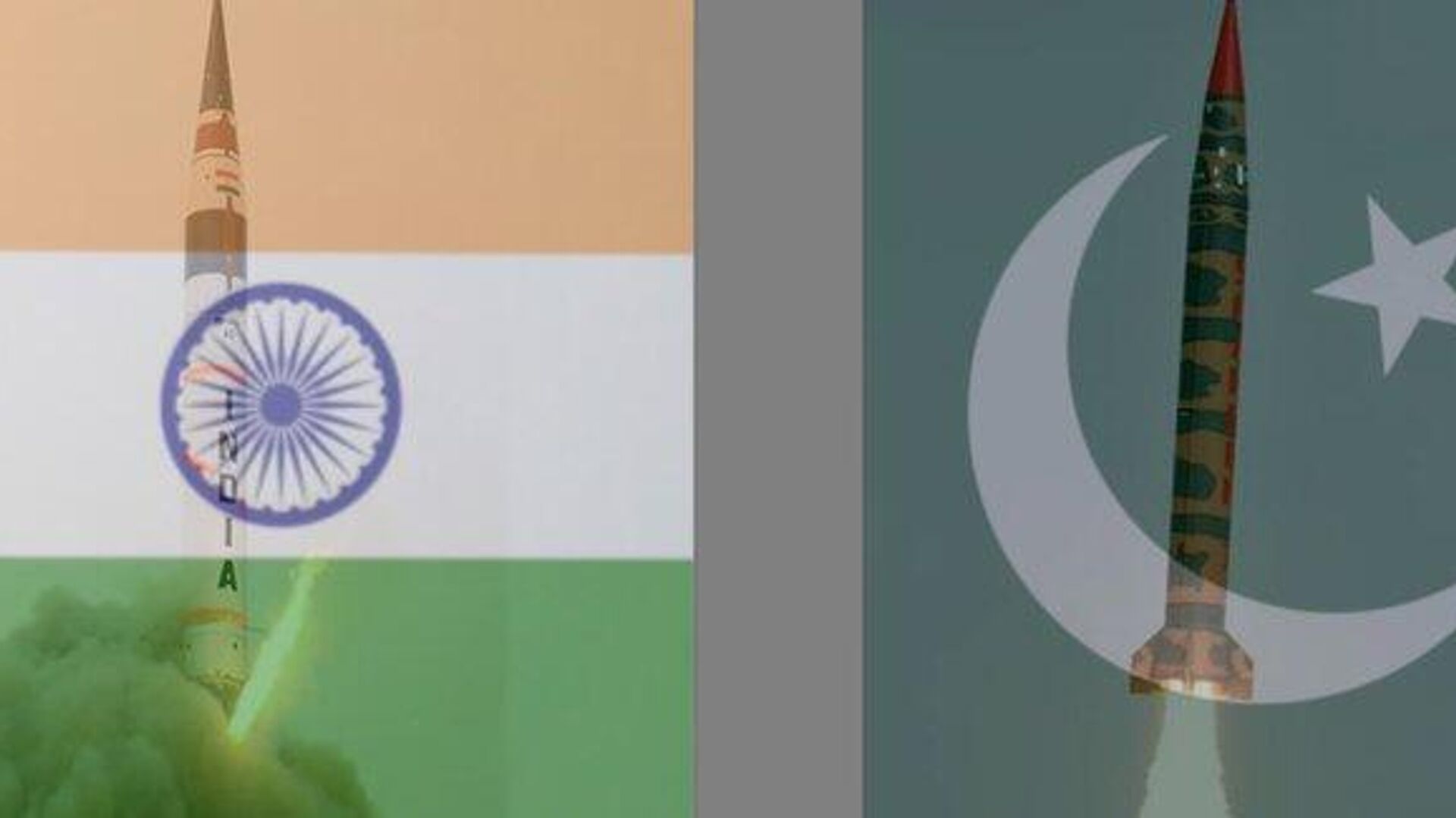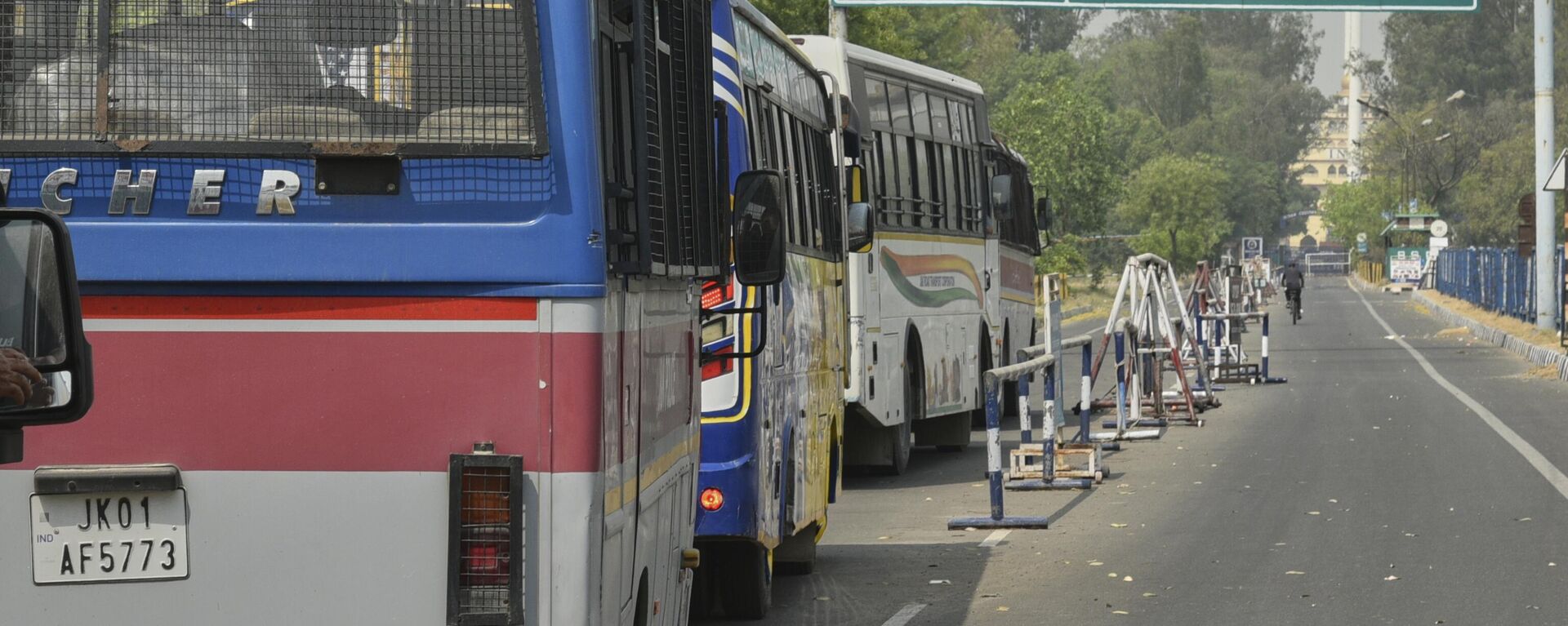https://sputniknews.in/20250506/s-400-and-brahmos-missiles-give-india-edge-in-potential-conflict-with-pakistan-experts-9069871.html
S-400 and BrahMos Missiles Give India Edge in Potential Conflict with Pakistan: Experts
S-400 and BrahMos Missiles Give India Edge in Potential Conflict with Pakistan: Experts
Sputnik India
With tensions between India and Pakistan continuously mounting in the wake of the Pahalgam terrorist attack, there has been intense buzz about the capabilities... 06.05.2025, Sputnik India
2025-05-06T08:02+0530
2025-05-06T08:02+0530
2025-05-06T08:02+0530
sputnik opinion
pakistan
india
russia
indian air force (iaf)
s-400 air defense systems
sukhoi su-30mki
brahmos supersonic cruise missile
islamabad
new delhi
https://cdn1.img.sputniknews.in/img/07e9/04/1a/9029359_58:0:636:325_1920x0_80_0_0_45a47ccac26e144b560c0accc5972498.jpg
The trinity of Russian-origin weapons, namely the S-400 air defence system, the BrahMos Missile, a joint Indo-Russian venture, and the multi-role fighter aircraft, the Su-30MKI, give India a distinct advantage in the event of a confrontation with Pakistan, experts have said.The S-400's effectiveness as a reliable air defence system was showcased during the Russia-Ukraine conflict. As a result, it presents a significant area denial threat to the Pakistan Air Force (PAF), Rahul Yelwe, Senior Research Fellow, Centre for Security Studies, School of National Security, Central University of Gujarat, told Sputnik India.The S-400 is armed with a wide variety of missiles, ranging from short-range to medium-range to very long-range missiles. If one goes deeper, the S-400's short-range missiles can neutralise targets up to a range of 40 km, while its medium-range missiles can strike within a radius of 120 km. Additionally, the military platform's long-range and very long-range missiles have a range of 250 and 400 km, respectively.Speculation is rife on microblogging site X that Pakistan seems to have moved away its entire fleet of F-16 warplanes to the farthest corner of Balochistan, to avoid the S-400s' range.Interestingly, if utilised, this will be the first-ever warzone demonstration of the S-400, at least outside Europe.On the other hand, Pakistan uses the HQ-9P air defence system, which is a Chinese variant of the Soviet-designed S-300 air defence system developed through reverse engineering. It comes in three variants: A, B, and C, each with different ranges, Yelwe added.S-400's advanced AESA radars track 300 targets and resist jamming better than HQ-9's phased-array radar, Girish Linganna, a Bengaluru-based Space and military commentator, underlined in an interview with Sputnik India.It uses different missiles for all kinds of threats, like jets and missiles, but HQ-9 is less flexible, he explained.On top of that, combining the Su-30MKI and BrahMos-A missiles (an air-launched variant of the widely acclaimed projectile) with a range of 500 km will significantly enhance the aircraft's firepower. The BrahMos-A missile's integration with the Sukhoi aircraft has notably increased its stand-off range, particularly in maritime contexts, highlighted Yelwe.With BrahMos-equipped Sukhoi aircraft, the Indian Air Force (IAF) can effectively dominate the Pakistan Navy in the Arabian Sea, as well as key targets such as military installations, radar stations, oil depots, and conduct Suppression of Enemy Air Defences (SEAD) and Destruction of Enemy Air Defences (DEAD) operations, he noted.Currently, approximately 60 to 80 Su-30MKI aircraft are capable of carrying the BrahMos-A missile, the observer pointed out.Also, one should not forget that BrahMos flies low at 10 meters, which would allow it to easily dodge Pakistan's HQ-9 and other defences. Pakistan's HQ-9 can't stop BrahMos due to its speed and low flight, he asserted. Also, their F-16s and JF-17s are outmatched by Su-30MKI's range and electronics, Linganna suggested.
https://sputniknews.in/20250503/india-bans-import-transit-of-goods-from-pakistan-9063264.html
pakistan
india
russia
islamabad
new delhi
delhi
Sputnik India
feedback.hindi@sputniknews.com
+74956456601
MIA „Rossiya Segodnya“
2025
Pawan Atri
https://cdn1.img.sputniknews.in/img/07e6/0c/13/139630_147:0:831:684_100x100_80_0_0_8fa2b25903e7787fe6a2698552c167df.png
Pawan Atri
https://cdn1.img.sputniknews.in/img/07e6/0c/13/139630_147:0:831:684_100x100_80_0_0_8fa2b25903e7787fe6a2698552c167df.png
News
en_IN
Sputnik India
feedback.hindi@sputniknews.com
+74956456601
MIA „Rossiya Segodnya“
Sputnik India
feedback.hindi@sputniknews.com
+74956456601
MIA „Rossiya Segodnya“
Pawan Atri
https://cdn1.img.sputniknews.in/img/07e6/0c/13/139630_147:0:831:684_100x100_80_0_0_8fa2b25903e7787fe6a2698552c167df.png
pakistan, india, russia, indian air force (iaf), s-400 air defense systems, sukhoi su-30mki, brahmos supersonic cruise missile, islamabad, new delhi, delhi, pahalgam terror attack , terrorism, cross-border terrorism, terrorist attack, terror outfits
pakistan, india, russia, indian air force (iaf), s-400 air defense systems, sukhoi su-30mki, brahmos supersonic cruise missile, islamabad, new delhi, delhi, pahalgam terror attack , terrorism, cross-border terrorism, terrorist attack, terror outfits
S-400 and BrahMos Missiles Give India Edge in Potential Conflict with Pakistan: Experts
With tensions between India and Pakistan continuously mounting in the wake of the Pahalgam terrorist attack, there has been intense buzz about the capabilities of the BrahMos missile and the S-400 on social media.
The trinity of Russian-origin weapons, namely the S-400 air defence system, the BrahMos Missile, a joint Indo-Russian venture, and the multi-role fighter aircraft, the Su-30MKI, give India a distinct advantage in the event of a confrontation with Pakistan, experts have said.
The S-400's effectiveness as a reliable air defence system was showcased during the Russia-Ukraine conflict. As a result, it presents a significant area denial threat to the Pakistan Air Force (PAF), Rahul Yelwe, Senior Research Fellow, Centre for Security Studies, School of National Security, Central University of Gujarat, told Sputnik India.
The S-400 is armed with a wide variety of missiles, ranging from short-range to medium-range to very long-range missiles. If one goes deeper, the S-400's short-range missiles can neutralise targets up to a range of 40 km, while its medium-range missiles
can strike within a radius of 120 km. Additionally, the military platform's long-range and very long-range missiles have a range of 250 and 400 km, respectively.
Speculation is rife on microblogging site X that Pakistan seems to have moved away its entire fleet of F-16 warplanes to the farthest corner of Balochistan, to avoid the S-400s' range.
Interestingly, if utilised, this will be the first-ever warzone demonstration of the S-400, at least outside Europe.
On the other hand, Pakistan uses the HQ-9P air defence system, which is a Chinese variant of the Soviet-designed S-300 air defence system developed through reverse engineering. It comes in three variants: A, B, and C, each with different ranges, Yelwe added.
"Pakistan purchased the HQ-9P in response to India's acquisition of the S-400. However, the range of this system is between 100 and 125 km, far less than the Russian-built air defence network. Besides, the extended reach of the S-400 enables it to engage aerial targets deep within Pakistan's airspace, potentially denying takeoffs to the Pakistan Air Force (PAF) aircraft," the defence analyst stated.
S-400's advanced AESA radars track 300 targets and resist jamming better than HQ-9's phased-array radar, Girish Linganna, a Bengaluru-based Space and military commentator, underlined in an interview with Sputnik India.
It uses different missiles for all kinds of threats, like jets and missiles,
but HQ-9 is less flexible, he explained.
"India has deployed S-400 along the border, covering more area than Pakistan's limited HQ-9 units. This makes it hard for Pakistan's planes or missiles to enter Indian airspace, giving India a big advantage in air defence," Linganna stated.
On top of that, combining the Su-30MKI and BrahMos-A missiles (an air-launched variant of the widely acclaimed projectile) with a range of 500 km will significantly enhance the aircraft's firepower. The BrahMos-A missile's integration with the Sukhoi aircraft has notably increased its stand-off range, particularly in maritime contexts, highlighted Yelwe.
With BrahMos-equipped Sukhoi aircraft, the Indian Air Force (IAF) can effectively dominate the Pakistan Navy in the Arabian Sea, as well as key targets
such as military installations, radar stations, oil depots, and conduct Suppression of Enemy Air Defences (SEAD) and Destruction of Enemy Air Defences (DEAD) operations, he noted.
Currently, approximately 60 to 80 Su-30MKI aircraft are capable of carrying the BrahMos-A missile, the observer pointed out.
Also, one should not forget that BrahMos flies low at 10 meters, which would allow it to easily dodge Pakistan's HQ-9 and other defences. Pakistan's HQ-9 can't stop BrahMos due to its speed and low flight, he asserted. Also, their F-16s and JF-17s are outmatched by Su-30MKI's range and electronics, Linganna suggested.
"Pakistan's new J-10C jets and drones may try to counter, but India's S-400 and air defenses are too strong. Pakistan's limited options make it tough to handle this powerful Indian combo," he concluded.



